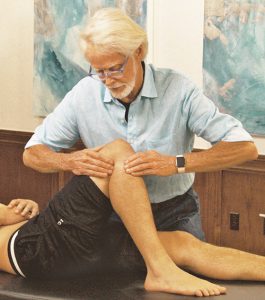
Depending on your goals as a professional massage therapist or bodyworker, along with your own preferences and passions, it is possible to take your investment in necessary or elective massage CEUs in any number of directions. However, before you enroll in the first massage therapy CEU that catches your eye, it can pay to put together a strategy to ensure that each of your massage CEs continue to build on one another, taking your career closer and closer to the practice of your dreams. Of course, before you can develop a wise strategy for continued massage training, you must first have an idea of what the practice of your dreams might look like, keeping in mind that this vision may change through the years. Here, we will discuss a couple basic strategies for enrolling in massage CEU programs in order to achieve some of the more common goals among manual therapists.
For those who are still early in their careers, perhaps just a year or two post-graduation, the main game plan when it comes to taking massage CEU courses may simply be to explore new massage methods and techniques, searching for those modalities that feel the most exciting for you and seem to hold great promise in terms of helping your clients achieve their goals for overall health and well-being. You may have been briefly introduced to a certain modality during massage school and now wish to use your massage CEU investment to pursue further education in this modality. There are a number of benefits of taking this more exploratory approach to massage CEU programs, starting with the fact that you can satisfy your curiosity about any intriguing new methods of massage therapy or bodywork and get an idea of whether or not these unknown modalities are right for you and your clients.
Another benefit of using a massage CEU strategy that will allow you to try out a wide array of new methods and techniques is that you will not need to make a major investment of time or money if you find out that a certain modality is not suited for your — just one or two courses should be enough to decide. A lovely upshot of exploring a variety of massage methods and techniques is that you will gain a solid body of knowledge about sheer quantity and diversity of modalities within the field of manual therapy. For those practitioners whose goal is to offer their clients one-stop shop for a broad spectrum of massage and bodywork styles, this exploratory approach to enrolling in massage CEU programs seems to be the best bet.
A different strategy for pursuing continuing education is to pick one method of massage therapy that most stokes your passion and learn everything you possibly can about it via CE. This focused approach can actually dovetail with the exploratory strategy outlined above, as a practitioner may transition into the focused strategy once his or her exploration leads to a modality that begs to be further explored. Often, this is the case among students who make their way to one of Erik Dalton’s seminars on Myoskeletal Alignment Techniques (MAT) or sign up to learn about MAT through home-study or online continuing education. Curiosity about Dalton’s renowned system of deep tissue massage techniques for the management of pain, along with clients who present with pain patterns that seem difficult to dissolve for any lasting period of time, are common reasons practitioners land in one of Dalton’s MAT classes.
From there, many folks find that a passion for this thorough pain management modality—some may call it a form of orthopedic massage, medical massage or sports massage therapy—tends to take over and send manual therapists climbing the MAT ladder by enrolling in more and more advanced courses. The fact that MAT gives massage therapists and bodyworkers detailed protocols for both assessing and addressing specific pain patterns and conditions appears to be one of the key reasons practitioners are so passionate about this modality. With this rich method of manual therapy at their fingertips, practitioners can begin to feel much more confident about their ability to give clients a solid solution to even the most persistent forms of pain.
On sale this week only!
Save 25% off the Posture Pain Performance course!

NEW! USB version with enhanced video
Discover the foundational principles behind MAT technique as we take you on an in-depth look at the connection between pain, posture and function. Save 25% off the Posture Pain Performance course this week only. Offer expires Monday April 22nd. Click the button below for more information and to purchase the course. Upon completion receive 20CE hours and a certificate of completion to display in your office.
Bonus: Order the Home Study version and receive the e-Course for FREE!





